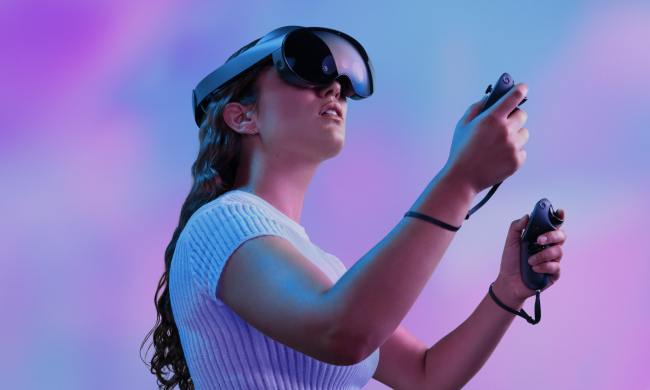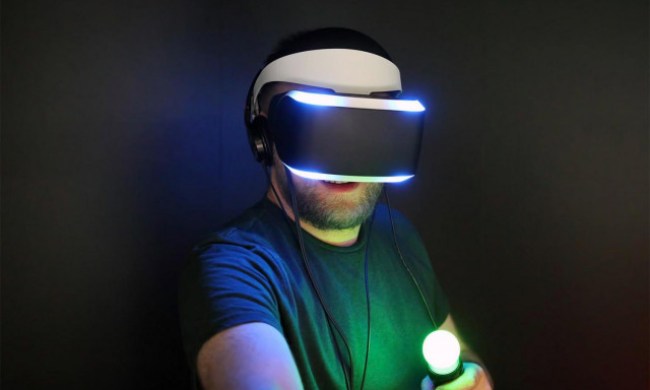It’s the battle of the Vives. HTC’s Vive Pro delivers one of the best virtual reality experiences at professional-grade quality. The newly launched Vive Cosmos is geared more toward the average person, though it’s no slouch either when it comes to bringing VR into the home.
Whether you’re trying to model and design a new architectural experience or are battling the enemies in an interactive VR game, these two headsets are capable of delivering sharp graphics thanks to the power of capable GPUs when tethered to a PC. So, how does the Cosmos stack up against the Vive Pro? Should you buy one over the other?
Design
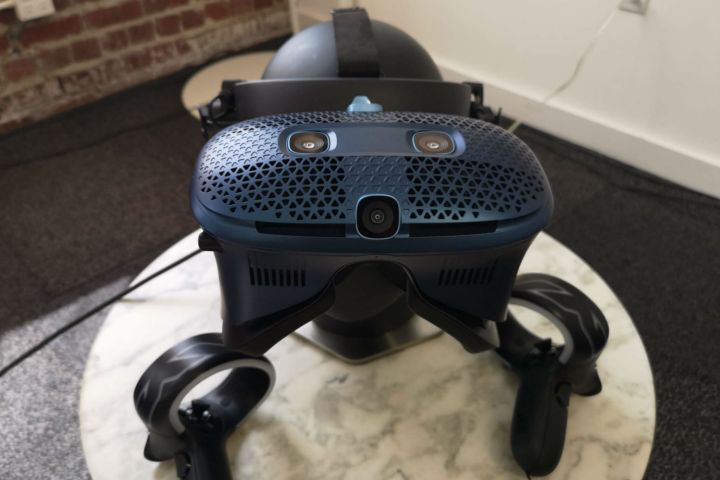
Both the Vive Pro and Vive Cosmos rely on HTC’s halo head mounting system. You have a solid open ring that goes around your head and a detachable elastic strap that runs down the center from front to back to help distribute the weight more evenly. The goggles are placed on the front with plenty of padding on the face gasket for an ergonomic experience. The padding also blocks out ambient room light, which helps drive a more immersive VR experience.
The integrated flip-out earpads deliver audio without requiring you to don yet another accessory on your head. The ear cups make for a very comfortable fit with an on-ear design on both Vive headsets.
Being the newer model of the two, the Vive Cosmos comes with a nifty design by allowing the goggles portion to flip up. This flip-up design not only makes it easier to don and doff the headset, but can also make VR more social, allowing you to better interact with other people in the same room. This ingenious design – pun intended – is so flippin’ good that we hope other headsets emulate the Cosmos’ unique style.
Image quality
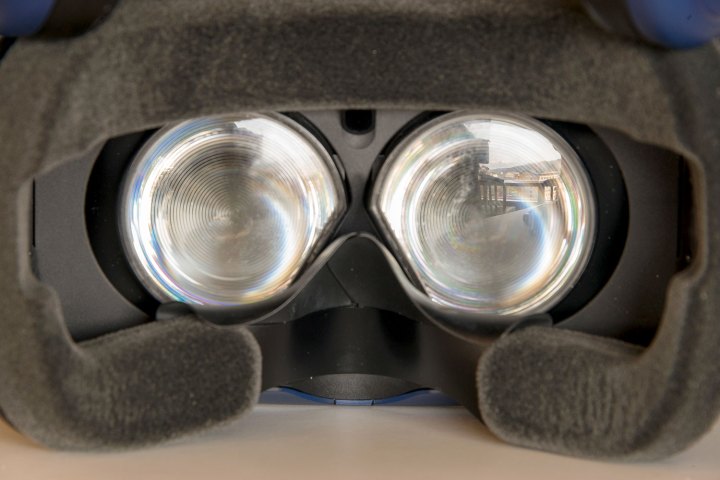
Thanks to high resolution and crisp displays, both the Vive Pro and the Vive Cosmos lead the industry in screen clarity. The pixel-packed panels on these headsets mean you won’t even notice any screen door effects, and this is a definite plus as it leads to better graphics and a more immersive visual experience. When the technology fades into the background, you’ll really get lost in the storytelling and the visuals of VR.
The Vive Pro relies on two bright AMOLED screens, delivering a resolution of 1,440 x 1,600 pixels to each eye. With AMOLED, you’re getting inky blacks and vivid colors. The Vive Cosmos has a similar 1,440 x 1,700 pixels piped to each eye, leading to a slightly taller field of view than its enterprise cousin. However, the Cosmos relies on an LCD panel with full RGB subpixels, leading to a very crisp and vibrant panel. Only Samsung’s Odyssey HMD comes with a more pixel dense screen, with a resolution of 2,160 x 2,160 per eye.
Both Vive headsets come with 90Hz refresh rates and frame rates of up to 90 FPS, optimal in helping reduce motion sickness and nausea. They both also feature a 110-degree field-of-view, so there’s no difference in immersion on that all-important spec.
Controllers

These two headsets take radically different approach when it comes to tracking and controllers. Whereas the Vive Pro relies on externally placed sensors for more precise 360-degree tracking, the Cosmos, which was designed for living room use, relies instead on six embedded cameras for 310 degrees of tracking.
Because the Vive Pro is aimed more at enterprise applications – like architectural modeling and design work – it comes with two simple controllers with a multifunction trackpad, limited buttons, trigger, and haptic feedback. The Vive Cosmos also supports haptics feedback for response, but it has more controls and buttons specifically made for game play. It also comes with shoulder buttons and triggers, a joystick, and a large ring that lights up to help the VGA cameras on the headset maintain tracking when used in a darkened room.
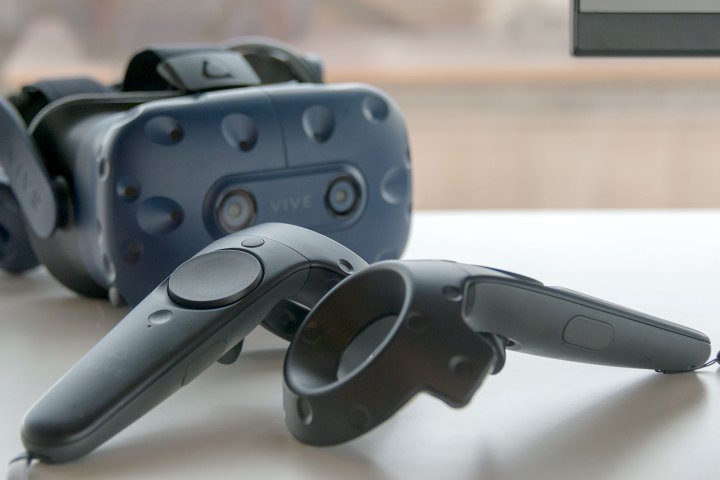
The Cosmos uses an array of six VGA cameras – four on the front and one on either side of the headset – to track hand movement and your positioning as you walk and explore VR worlds. The controllers on the Cosmos comes with a ring of light to aid the camera array maintain tracking, even in dark environments, and when the controllers fall outside the 310-degree field of view, the embedded gyroscopes kick in to approximate positioning.
In titles where you want more precise manipulation of the controllers, you’ll want to go for the Cosmos. Each of the two controllers come with triggers, side buttons, a more accurate joystick, and more buttons on the top surface designed for gaming, and the experience is not unlike the Joy-Con controller on the Nintendo Switch. In contrast, the controllers on the Vive come with triggers, more limited selection of buttons, and a multifunction trackpad.
Both sets of controllers feature haptic feedback, but in games and apps where your lifting things over your head, the Vive Pro delivers better 360-degree tracking thanks to its externally placed room sensors. If you want the same level of accurate tracking on the Cosmos, HTC will sell an optional modular faceplate that swaps out two of the cameras on the front of the headset in favor of sensors that will work with the Vive Pro’s external tracking system. The convenience of not having to set up external sensors, though, is a huge win for using the Cosmos at home.
The Vive Cosmos is the VR headset you want
At $699 for the Vive Cosmos and $799 for the Vive Pro (before you add in the price of the external sensors), these HTC headsets are priced at the premium end of the VR space. That’s something to consider, especially when compared with the $399 Oculus Rift S.
The new Vive Cosmos adds to that with a new flip-up goggle design, but the biggest difference between these two headsets is that the Pro relies on external sensors, while the Vive Cosmos uses embedded cameras that make it more suitable for use in compact living room spaces. Those features, together with the reduced price and better controllers, make the Cosmos the better choice when it launches on October 3.
